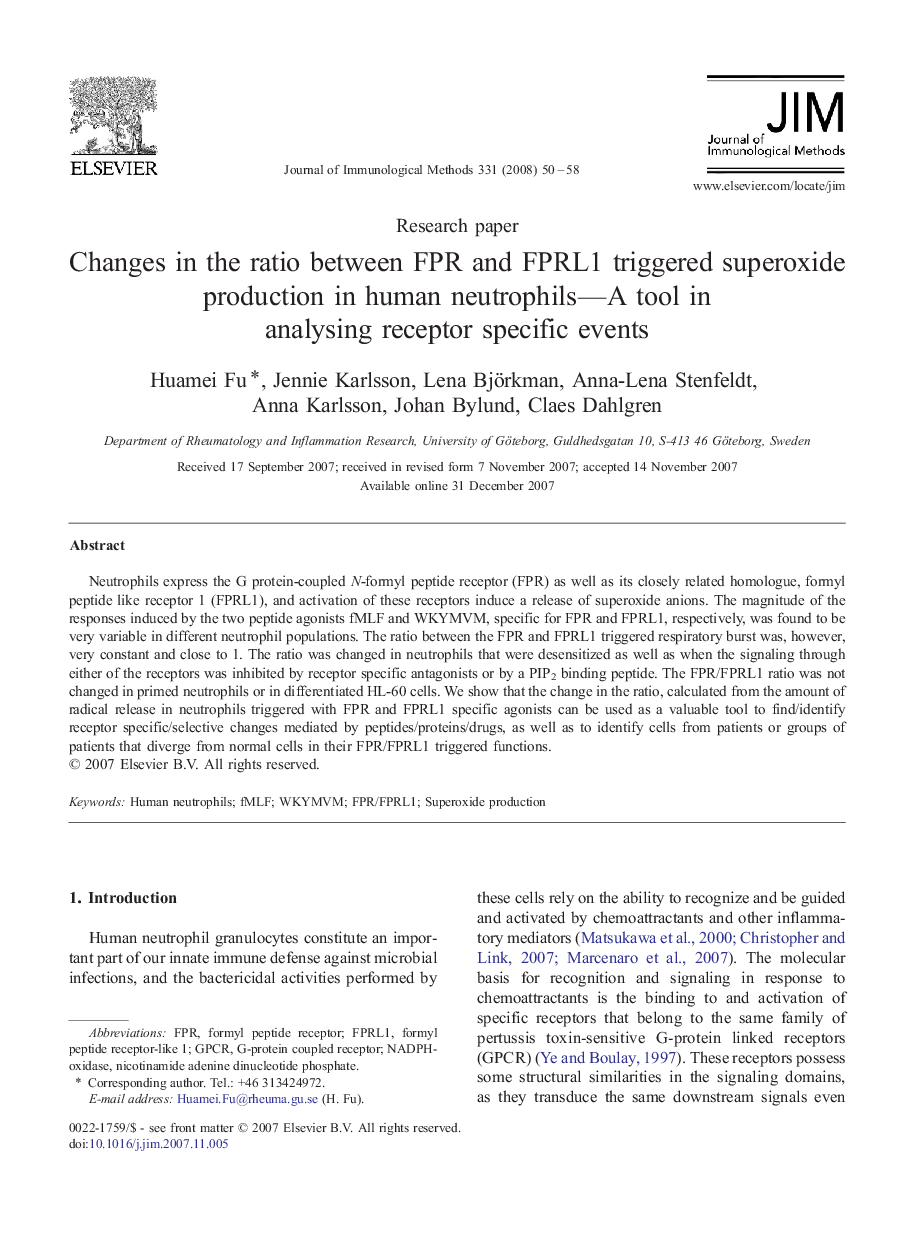| Article ID | Journal | Published Year | Pages | File Type |
|---|---|---|---|---|
| 2089003 | Journal of Immunological Methods | 2008 | 9 Pages |
Neutrophils express the G protein-coupled N-formyl peptide receptor (FPR) as well as its closely related homologue, formyl peptide like receptor 1 (FPRL1), and activation of these receptors induce a release of superoxide anions. The magnitude of the responses induced by the two peptide agonists fMLF and WKYMVM, specific for FPR and FPRL1, respectively, was found to be very variable in different neutrophil populations. The ratio between the FPR and FPRL1 triggered respiratory burst was, however, very constant and close to 1. The ratio was changed in neutrophils that were desensitized as well as when the signaling through either of the receptors was inhibited by receptor specific antagonists or by a PIP2 binding peptide. The FPR/FPRL1 ratio was not changed in primed neutrophils or in differentiated HL-60 cells. We show that the change in the ratio, calculated from the amount of radical release in neutrophils triggered with FPR and FPRL1 specific agonists can be used as a valuable tool to find/identify receptor specific/selective changes mediated by peptides/proteins/drugs, as well as to identify cells from patients or groups of patients that diverge from normal cells in their FPR/FPRL1 triggered functions.
